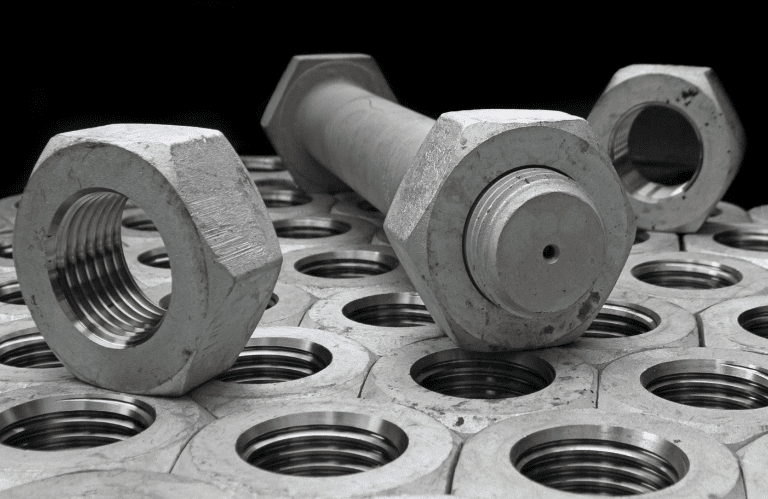Sector
Mining
Location
West Midlands
Services
Failure investigation
Fastener testing
From Catastrophe to Confidence: Recommendations for safety and efficiency following bolt failure that caused factory fire
Project Overview
Our recent collaboration with a mining equipment manufacturer focused on investigating a bolt failure within their oil housing unit for an engine.
The customer explained that the bolts were used to hold a filter plate on the top of an oil pump housing. These bolts had experienced a failure., As a consequence, oil leaked onto the exhaust manifold igniting a fire that resulted in the destruction of the factory.
Find out more about our Failure Investigation servicesThe Challenge
A thorough investigation was crucial for our customer due to the severity of the failure, as the fire almost resulted in loss of life.
When fires happen, regulating bodies such as councils, government and fire safety officers usually require a detailed investigation of the industrial accident. Compliance with these investigations will help to understand the cause of the fire and support any legal, safety, and insurance proceedings. In this case, the fire of their factory almost resulted in fatalities of their workers, so an in-depth analysis of the root cause of failure would help them with their own safety investigations.
As part of our failure analysis, we can also provide our customer with vital information about what went wrong, so that they can put preventative measures in place to avoid future incidents from happening.
Find out more about our Failure Investigation servicesThe Solution
We received three samples from the customer to carry out a series of investigative tests.
- Two sets of bolts; the fractured bolts that had failed in service, and a set of manufactured “new” bolts for comparison.
- Front filter plate
- Oil filter housing
We carried out a full investigation, including:
- Visual inspection of all samples
- SEM Fractography
- Chemical analysis
- Hardness testing
- Metallographic examinations
The Results
During our investigations, we analysed the bolts, filter plates, and filter housing. Our chemical analysis and hardness testing confirmed that each sample was made of the right material for the application. We also confirmed the bolts met the required chemical, metallurgical and mechanical requirements of BS EN ISO 898-1 grade 10.9.
The main cause of the failure showed that the bolts had experience fatigue cracking, small microscopic cracks within the material. These cracks were likely caused by alternating stresses on the bolt over a prolonged period of time. We suspected that there were two main causes for this:
- The bolts had not been tightened enough when they were installed on the pump housing unit
- The bolts had become loose during service, due to the vibration effect of the pump housing unit.
As the bolts were loose during service, this had also caused minor surface damage to the filter plate around the area where the bolts were installed, likely caused by friction or burnishing.
Some minor surface damage was observed on the surface of the filter plates, around the area where the bolts were installed. This damage was likely caused by the loosening of the bolts causing friction against the plate.
We also found damage to the surface of the filter housing, which was likely caused by cyclic stresses resulting from the loosened bolt, or shock tensile stresses at the point of final failure.
Recommendations
After conducting a thorough analysis, our team of technologists provided the customer with some recommendations to help avoid future incidents, and also support the longevity of their equipment.
- Using vibration damping washers in future installations would help to prevent the bolts from loosening in service. This would also help prevent friction and burnishing damage against other metals, and would help to distribute uneven loads.
- Introducing a regular, preventative maintenance program would ensure that regular checks are carried out on the bolts and oil housing. This way, adjustments can be made if the bolts are becoming loose, and would identify any early signs of defects and damage.
- As part of the preventative maintenance program, the customer should also consider periodically replacing the bolts, to maintain the reliability, safety and efficiency of the equipment.
Find out more about our Failure Investigation services
Key outcomes
Identified root cause of failure
as fatigue cracking due to alternating stresses over time, and improper tightening and loosening of bolts during service
Confirmed material compliance
using chemical analysis and hardness testing, ensuring that the failure was due to operational factors rather than material defects.
Preventative recommendations
were given to minimise the risk of future failures, including using vibration damping washers, routine maintenance, and periodically replacing bolts
Related services
Failure Investigations
Metallography
Chemical Analysis
Fastener Testing
Contact us today
Related Case Studies
View All Case Studies
Cleaning Agent Identified as Culprit Behind Corrosion Crisis in Food Production
Read more.
BES Group Enhances Midlands’ Traffic Safety with Failure Investigations
Read more.
 About BES Group
About BES Group Accreditations & Credentials
Accreditations & Credentials Our Environmental, Social & Governance
Our Environmental, Social & Governance Careers at BES Group
Careers at BES Group Our Senior Leadership Team
Our Senior Leadership Team
